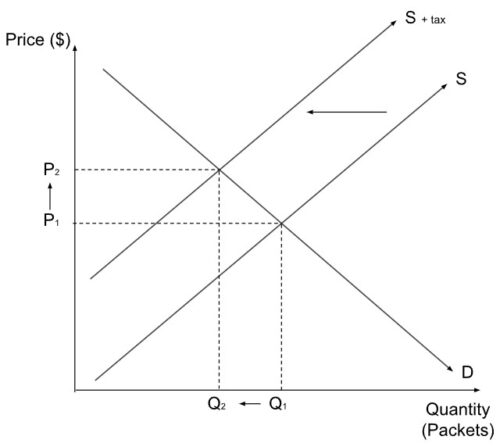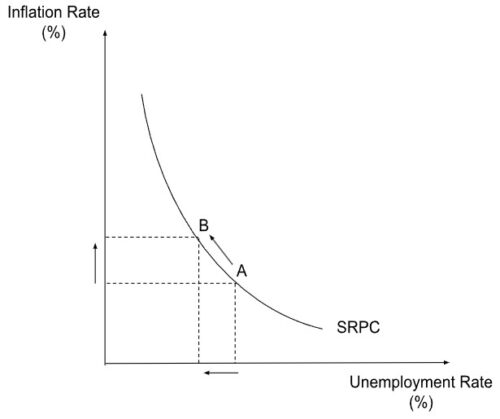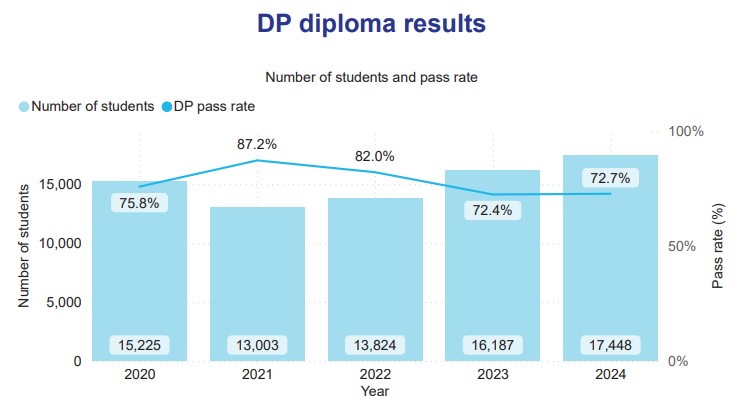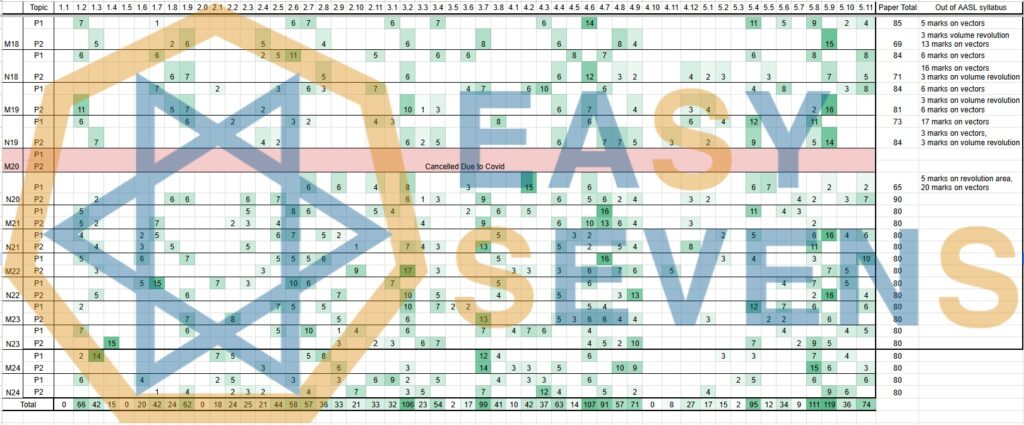The IB Economics Paper 1 & 2 can feel like a daunting challenge for many students, especially when it comes to tackling the long essay questions. With only a limited amount of time to answer, students must not only recall information but also demonstrate a deep understanding and ability to analyze complex economic concepts. If you want to secure the best possible marks in both Paper 1 and Paper 2, mastering the 15-mark essay question is absolutely crucial. These questions account for a significant portion of your grade, so learning how to approach them strategically can set you apart from your peers.
In this article, our IB Economics tutor explore the core techniques and strategies needed to tackle the 15-mark questions effectively. Whether you’re aiming for a top score or simply looking to improve your performance, this guide will walk you through everything you need to know, including how to allocate time, structure your answers, and apply real-world examples to strengthen your arguments. By the end, you’ll feel more confident in your ability to manage your exam time and craft comprehensive, well-evaluated responses.
1. Understanding the 15-Mark Essay Question in IB Economics Paper 1 & 2
What Is a 15-Mark Question in IB Economics Paper 1 & 2?
In both IB Economics Paper 1 and Paper 2, one of the most challenging question formats is the 15-mark essay question. These questions typically require you to “discuss” or “evaluate” a particular economic concept, policy, or scenario. Unlike simpler recall questions, the 15-mark questions demand a deeper level of analysis, critical thinking, and the ability to make well-informed judgments based on evidence.
For example, a typical 15-mark question could be phrased like this: “Discuss whether increasing government spending can always lead to economic growth.”
This format means that you must go beyond simply stating facts or describing concepts. You will need to evaluate the effectiveness of different economic policies, analyze the pros and cons of various approaches, and provide a balanced argument. The key here is to ensure that your response is well-rounded, demonstrating a clear understanding of both sides of the issue, before coming to a well-justified conclusion.
These questions can focus on a variety of topics, such as:
- Assessing the impact of government policies (e.g., fiscal or monetary policy).
- Evaluating the effectiveness of economic theories in real-world contexts.
- Discussing the trade-offs involved in making economic decisions.
Key Skills Assessed
The 15-mark essay questions assess several key skills that are essential for success in IB Economics Paper 1 & 2:
- Depth of Analysis: To answer these questions effectively, you must go beyond surface-level knowledge. For instance, if the question asks you to evaluate government spending, simply listing the potential effects (e.g., increased demand, budget deficits) is not enough. Instead, you should critically analyze the positive and negative impacts of these effects on different sectors of the economy.
A strong response will often include discussing real-world examples of countries where similar policies have been implemented. For example, referring to the UK’s fiscal policy during the 2008 financial crisis would add depth to your analysis.
- Evaluation: Evaluation is the heart of these questions. You must make a judgment about the effectiveness or feasibility of an economic policy or theory. This involves weighing the pros and cons, considering different viewpoints, and coming to a reasoned conclusion based on evidence.
For example, when evaluating whether increasing government spending leads to economic growth, you could discuss how such an increase might stimulate demand in the short term, but also consider long-term implications like inflation or government debt.
- Real-World Application: Including examples from real economies or industries can help strengthen your argument. For instance, if you’re discussing inflation control, referencing specific countries that have faced hyperinflation, such as Zimbabwe or Venezuela, would add credibility to your analysis.
2. Strategizing for IB Economics Paper 1 & 2 Success: Time Management
One of the biggest challenges in the IB Economics Paper 1 & 2 is managing time effectively. With both Paper 1 and Paper 2 containing long essay questions, you must allocate your time wisely to ensure you provide well-structured and well-argued answers without rushing through important points.
Allocating Time Wisely
For Paper 1, you will typically be given two long essay questions. The 15-mark question usually takes up a larger portion of your time, so it’s important to budget your time accordingly.
- Paper 1: Allocate 20 minutes to the 10-mark question, and dedicate 55 minutes to the 15-mark question.
- Paper 2: You’ll have a total of 55 minutes for the 15-mark question, as Paper 2 generally contains multiple shorter questions that require less time.
A recommended approach is to spend 10 minutes planning your 15-mark response. In this planning phase, you should:
- Identify key terms and concepts in the question.
- Brainstorm key points that support both sides of the argument.
- Jot down any real-world examples or case studies you can use in your answer.
Once you’ve completed the planning phase, spend the remaining 45 minutes writing the actual response.
Breaking Down Time per Section
Once you begin writing, it’s essential to structure your time efficiently for each part of the essay. Here’s a suggested breakdown:
First 5 minutes: Define key terms and outline the scope of your response. This is especially important if the question involves terms or concepts that might have multiple interpretations (e.g., “economic growth,” “government intervention”). Defining these terms ensures that your argument remains focused and that you’re clear on what you’re addressing.
Next 35-40 minutes: Analysis and Evaluation. This is the heart of your response. Break your analysis into distinct paragraphs, each dedicated to a different aspect of the question. For example, if discussing the effectiveness of government spending on economic growth, one paragraph could cover the positive short-term effects, while another could focus on potential long-term consequences, such as inflation.
Within each paragraph, include both analysis and evaluation. Show the positive aspects of each argument, but also critique them, considering counterarguments and potential limitations. This demonstrates a deep understanding and critical thinking.
Final 5-10 minutes: Judgment and Conclusion. This section is crucial for earning the final marks. Summarize your key points and make a well-reasoned judgment about the issue. You should not simply restate your analysis; instead, synthesize the information you’ve discussed and provide a final evaluation of the argument. This will give the examiner a sense of your ability to form a coherent, well-supported conclusion based on the evidence.
3. IB Economics Essay Structure: A Step-by-Step Guide
Mastering the structure of your 15-mark essay is crucial to writing a clear and persuasive answer. A well-organized essay not only makes it easier for examiners to follow your argument but also ensures that you’ve covered all relevant aspects of the question. Below is a step-by-step guide on how to structure your 15-mark essay, breaking it down into manageable sections.
Step 1: Define Key Terms
The first step in answering a 15-mark question is to ensure that you clearly define the key terms and concepts involved. This is an essential part of setting up the context of your argument. Defining terms provides clarity and ensures that your answer stays focused on what the question is asking.
For example, if you are answering a question on “monetary policy,” you would start by defining terms like “interest rates” and “inflation”. Explaining the relationship between these terms and how they affect the economy is vital for the examiner to understand the scope of your analysis. Without a clear definition, you risk losing marks for a lack of precision in your response.
- Example of Key Terms for a Monetary Policy Question:
- Interest rates – the cost of borrowing money, set by a country’s central bank.
- Inflation – the rate at which the general level of prices for goods and services is rising, leading to a reduction in purchasing power.
These definitions will lay the foundation for your analysis and demonstrate to the examiner that you understand the core concepts before diving into more complex discussions.
Step 2: Write Detailed Analysis Paragraphs
After defining key terms, it’s time to begin the analysis. This step is the heart of your essay, where you break down different perspectives and explore the economic arguments related to the question.
Pro/Con Structure
A common structure for the analysis section is the Pro/Con format, which involves analyzing one side of the argument and then presenting the opposite view. This balanced approach demonstrates your ability to critically examine multiple perspectives on the issue.
For instance, if the question is about the impact of higher taxes on consumer spending, you can start by exploring the pro side (the potential benefits of higher taxes, such as increased government revenue for public services) and then move to the con side (how higher taxes might reduce disposable income, leading to lower consumption).
- Example – Higher Taxes and Consumer Spending:
- Pro: Higher taxes can increase government revenue, which may be used to fund public services like healthcare and education. This can have long-term benefits by improving the quality of life and boosting economic productivity.
- Con: Higher taxes reduce disposable income, leaving consumers with less money to spend on goods and services. This could lead to a decline in consumer demand, potentially causing economic slowdown.
Multi-Policy Approach
For more complex questions, you might need to break down your analysis into several policy options and discuss each one in detail. This is particularly useful if the question requires you to assess the effectiveness of various economic strategies.
- Example – The Impact of Carbon Tax on Emissions: If the question asks you to evaluate the effectiveness of a carbon tax in reducing carbon emissions, you can discuss multiple approaches to tackling climate change:
- Carbon Tax: This policy imposes a cost on businesses for their carbon emissions, incentivizing them to reduce pollution.
- Subsidies for Renewable Energy: An alternative policy where the government provides financial support for the development of cleaner energy sources.
- Regulation of Emission Levels: Direct government intervention to set limits on emissions by industries.
By exploring these different policies, you can show a comprehensive understanding of the topic and demonstrate your ability to assess a variety of solutions.
Step 3: Provide a Thorough Evaluation
Once you’ve analyzed the pros and cons or multiple policy options, it’s time to evaluate the effectiveness of the argument. Evaluation is a critical aspect of the 15-mark essay question because it shows your ability to make informed judgments based on evidence.
Here’s what to include in the evaluation:
Strengths: What are the benefits of the policy or theory you’re discussing? Why does it work in certain contexts?
Weaknesses: What are the limitations or drawbacks? Are there potential negative consequences that need to be addressed?
Real-World Examples: Use real-world case studies or data to illustrate your points. For example, if discussing the carbon tax, you could reference countries like Sweden, which have successfully implemented such policies, or discuss challenges faced by other countries, such as the USA, where political opposition has hindered implementation.
Example – Evaluating a Carbon Tax:
- Strengths: A carbon tax can be highly effective in reducing emissions, as it incentivizes businesses to adopt cleaner technologies. Sweden’s carbon tax, for example, has contributed to a significant reduction in greenhouse gas emissions while still maintaining economic growth.
- Weaknesses: However, a carbon tax can increase production costs, potentially making certain goods and services more expensive. Industries like manufacturing and transportation, which are major contributors to carbon emissions, may face higher costs, which could reduce their competitiveness in the global market.
In your evaluation, you should also acknowledge the limitations of your analysis. For example, you could mention that while the carbon tax works in some countries, it may not be as effective in others due to varying political, economic, and social conditions.
Step 4: The Final Judgment
Finally, your essay must conclude with a clear judgment based on the arguments and evidence you’ve presented throughout your analysis. This is not a simple summary; it’s a reasoned conclusion that ties together your analysis and evaluation to form a decisive stance on the issue.
Your judgment should be grounded in the analysis you’ve conducted and should answer the specific question posed. Be sure to highlight the most important points that led you to your conclusion.
- Example – Judgment on Higher Taxes: “While higher taxes may reduce consumption in the short term, they are essential for funding public services such as education and healthcare, which contribute to long-term economic stability. Therefore, although there are short-term drawbacks, the broader benefits of higher taxes, including better public services and social equity, justify their implementation.”
This final judgment is where you pull everything together. It’s important to provide a well-supported conclusion that reinforces the arguments made throughout the essay.
4. Real-World Examples: Why They Matter For IB Economics Papers
The Role of Examples in Supporting Arguments
In IB Economics, using real-world examples is an effective way to strengthen your analysis and demonstrate your understanding of how economic theory plays out in real-life situations. Real-world examples show that you can apply theoretical knowledge to actual economic events and outcomes, adding depth and relevance to your argument.
For instance, when discussing government intervention in the economy, you could mention Sweden’s social welfare programs. Sweden has a strong system of government-run healthcare, education, and social benefits. While these programs have had positive effects—such as reducing poverty and improving public health—they have also led to challenges, including high taxation and a rising public debt.
By integrating such an example, you not only support your arguments but also show that you understand the practical implications of the theory. It helps the examiner see that you can think critically and apply economic concepts to real-world situations.
- Example of a Real-World Application:
- Government Intervention in Sweden: Sweden’s social welfare programs are a classic example of government intervention. These programs have been credited with reducing income inequality and providing a safety net for citizens. However, the associated high taxes and the strain on public spending have sparked debates about the long-term sustainability of the system.
Including examples like this helps illustrate the complexities of economic decisions and strengthens your argument by showing both the benefits and drawbacks of certain policies.
How to Integrate Examples
While examples are crucial for providing context and supporting your points, it’s important to integrate them smoothly into your analysis. The goal is to ensure that the examples enhance your argument rather than interrupt the flow of your essay.
Here are a few best practices for integrating examples:
Introduce Examples in Context: Begin by explaining the relevant economic theory or policy, then introduce the example in a way that shows its direct relevance.
Use Examples to Illustrate Specific Points: Make sure the example you provide is tailored to the particular argument or analysis you are making. For instance, if discussing the impact of demographic changes on government spending, use Japan’s aging population as an example.
Avoid Overloading Your Essay with Examples: While examples are important, don’t overwhelm the reader with too many. Use them selectively to highlight key points and ensure they add value to your argument.
- Example of How to Integrate an Example Smoothly:
- In the case of Japan’s aging population, the government has increased social welfare spending to support the elderly. This policy has helped improve the standard of living for senior citizens, but it has also put significant pressure on Japan’s fiscal resources, leading to rising government debt. This example highlights the balance that policymakers must strike between providing essential services and maintaining long-term fiscal sustainability.
By following these practices, you can ensure that your real-world examples are well-integrated into your essay, helping to clarify and support your arguments without disrupting the flow.
5. The Power of Diagrams in IB Economics Paper 1 & 2
Why Diagrams Are Important
Diagrams are a powerful tool in IB Economics Paper 1 & 2 because they can visually clarify complex economic concepts and make your arguments more persuasive. A well-drawn diagram can help to illustrate relationships between economic variables, making your explanation more digestible and easier to understand for the examiner.
Diagrams are particularly useful when discussing concepts such as supply and demand, market equilibrium, inflation, or government policies. For example, when discussing the effects of an increase in taxes on cigarettes, a supply and demand curve can clearly demonstrate how the higher tax shifts the supply curve, leading to a higher price and a decrease in quantity demanded.
In addition to making complex ideas easier to understand, diagrams also show the examiner that you are capable of applying economic models effectively. This not only strengthens your argument but also signals to the examiner that you have a deep understanding of economic principles.
- Example of Using Diagrams:
- Supply and Demand Curve for Cigarettes: To show the impact of a higher tax on cigarettes, you can draw a supply and demand curve, where the increase in taxes shifts the supply curve leftward. As a result, the price of cigarettes increases, and the quantity demanded decreases, which is the expected outcome based on economic theory.
When and How to Use IB Economic Diagrams
You don’t need to draw a diagram for every paragraph, but including diagrams when they visually explain your points can significantly enhance your essay. Diagrams are most useful when they help to simplify or clarify an argument that may otherwise be difficult to convey through text alone.
Use Diagrams When They Add Value: Include a diagram when it helps clarify a relationship between variables or shows the effects of a policy. For example, when discussing inflation, you could use the Philips Curve to show the trade-off between inflation and unemployment.
Don’t Overuse Diagrams: While diagrams are useful, they should complement your written analysis rather than replace it. Make sure to explain the diagram in words and ensure it directly supports your argument.
Example – Inflation and the Phillips Curve:
- In a discussion on inflation, you can use the Phillips Curve to show the inverse relationship between inflation and unemployment. The diagram can visually demonstrate how, in the short run, policymakers face a trade-off between controlling inflation and maintaining low unemployment.
Tips for Drawing Effective IB Economic Diagrams
To maximize the effectiveness of your diagrams, follow these tips:
Accuracy Is Key: Ensure that your diagrams are correct. Label your axes clearly and show the correct shifts in curves or lines. The accuracy of your diagram is critical to demonstrate that you understand the economic model being discussed.
Reference Your Diagrams: Always reference your diagram within the text. For instance, after drawing a supply and demand curve to show the impact of a tax, refer to it directly in your text: “As shown in Figure 1, the increase in taxes shifts the supply curve leftward, leading to higher prices and reduced demand.”
Keep Diagrams Simple: Avoid overly complicated diagrams that may confuse the reader. Focus on illustrating the key point and keep the diagram clean and straightforward.
- Example – Drawing a Simple Supply and Demand Diagram:
- If you’re discussing the effect of a tax on cigarettes, the supply curve should shift leftward (upward in price) to show the impact of the tax. Label the price axis (P) and quantity axis (Q), and clearly show the equilibrium price and quantity before and after the tax is applied.
By following these tips, you can ensure that your diagrams are effective tools for enhancing your argument and helping the examiner understand your point of view more clearly.
6. IB Economics Paper 2: Extra Considerations for Extracts and Data
Using Extracts in IB Economics Paper 2
In Paper 2, many questions will be accompanied by data extracts—charts, graphs, tables, or passages of information—that you must incorporate into your answer. These extracts are a critical element of your response, and using them effectively can help demonstrate that you understand the real-world applications of the economic concepts being discussed.
It’s important to avoid the temptation to simply copy and paste information from the extract into your essay. Instead, your goal should be to analyze the data and use it to support your arguments, linking the figures directly to the concepts in the question.
How to Cite Extracts Without Directly Copying Information: When you refer to the data in the extract, be sure to paraphrase the key points and explain how they are relevant to the topic at hand. Avoid restating data word for word. Instead, summarize and interpret it in a way that strengthens your argument.
- Example:
- “According to the extract, the unemployment rate in France dropped by 2% last year, which could be linked to the government’s new employment policies. This suggests that the labor market reforms, such as the reduction of payroll taxes for companies hiring young workers, may have had a positive effect on employment levels.”
- Example:
By carefully referencing the extract and interpreting the data, you show that you can apply theory to real-world evidence and make your argument more convincing.
Critiquing Extracts and Data
In addition to using the data to support your argument, you should also critically evaluate the quality of the data. Are there any limitations or biases in the information presented? Is the extract missing key pieces of information that could influence the analysis?
A critical evaluation of the extract helps you present a balanced view, which is an essential aspect of the evaluation section in your 15-mark essay. It also shows that you are thinking critically about the data and not just accepting it at face value.
- Example of Critiquing Extracts:
- “While the extract shows a drop in unemployment, it fails to account for underemployment in part-time jobs, which might overstate the policy’s success. A deeper analysis would require looking at full-time job creation rather than just overall unemployment rates.”
In this example, you’ve acknowledged the extract’s validity but also pointed out its potential limitations. By identifying such nuances, you demonstrate that you can evaluate data and think critically about its implications for the economic issue being discussed.
7. Common Mistakes to Avoid
While working on your 15-mark essays, it’s essential to avoid common pitfalls that can undermine the quality of your response. Below are some mistakes to watch out for and tips on how to avoid them:
Avoiding Superficial Analysis
One of the most common mistakes students make is offering superficial analysis. Superficial analysis means listing points or simply stating facts without explaining why they are important or how they relate to the question. You must go beyond just describing an economic principle or policy—demonstrate how it works in practice, and explain the potential implications.
- Example of Superficial Analysis:
Saying “higher taxes reduce consumption” is not enough. You need to explain why higher taxes might reduce consumption, how this could affect the economy, and provide evidence or examples to support your claim.
Better Example:
- “Higher taxes, especially on goods like cigarettes or alcohol, can reduce consumption because they raise the price of these goods, making them less affordable for consumers. This effect is particularly pronounced in goods with inelastic demand, where a price increase leads to a relatively large decrease in quantity demanded. For instance, in the case of tobacco products, many governments have used higher taxes as a tool to reduce smoking rates, resulting in decreased consumption, as evidenced by the success of anti-smoking campaigns in the UK.”
By providing detailed explanations and evidence, your analysis becomes more robust and demonstrates a deeper understanding of the economic principles at play.
Not Using Real-World Examples
Another common mistake is failing to incorporate real-world examples. Using real-world examples is one of the most effective ways to demonstrate your knowledge and understanding. Without examples, your essay will lack depth and could come across as theoretical rather than grounded in practical application.
- Example of Missing Real-World Examples:
Saying “government spending increases growth” is a generalization that lacks depth. Instead, try to mention a specific country or case study to make your argument more convincing.
Better Example:
- “Government spending, particularly on infrastructure, has been a key driver of economic growth in many countries. For example, the US government’s spending on the Interstate Highway System in the 1950s not only improved transportation efficiency but also created millions of jobs and stimulated long-term economic growth. Similarly, China’s massive investments in infrastructure over the last two decades have contributed to its rapid economic growth and urbanization.”
By referencing specific examples, you provide evidence that supports your argument and show your ability to link theory to practice.
8. Final Tips for Scoring Well on The IB Economics Paper 1 & 2
To excel in IB Economics Paper 1 & 2, particularly with 15-mark essay questions, focus on the following key strategies:
- Depth of Analysis: Go beyond just listing facts and policies. Explain how they work, provide evidence, and discuss potential implications.
- Clarity and Structure: Make sure your essay is well-organized, with clear definitions, analysis, evaluation, and a final judgment. This helps your reader (the examiner) follow your argument easily.
- Real-World Examples: Always back up your points with relevant examples from real-world economies, industries, or historical events. This shows that you can apply economic concepts in a practical context.
- Diagrams and Data: Use diagrams and data extracts to illustrate your points. Make sure to explain these visuals clearly in the context of your argument.
With consistent practice and a focus on following these strategies, you can master the 15-mark questions in both Paper 1 and Paper 2. Don’t forget to seek feedback from your teachers or peers, as this can help you identify areas for improvement and refine your exam technique.
Remember, the key to success in IB Economics Paper 1 & 2 is not just memorizing facts but demonstrating your ability to think critically, analyze economic issues, and communicate your understanding clearly and persuasively.
Now that you have a solid understanding of how to tackle 15-mark essay questions, start practicing regularly. Write essays, use real-world examples, draw diagrams, and get feedback. The more you practice, the more confident you will become, and the better your exam performance will be. Happy studying, and good luck!
Frequently Asked Questions (FAQ)
Time management is crucial in IB Economics exams. In Paper 1, allocate 20 minutes for the 10-mark question and 55 minutes for the 15-mark question. In Paper 2, where the 15-mark question is also important, try to spend around 10 minutes planning and 45 minutes writing. For both papers, make sure to break your time into smaller blocks—define key terms, analyze thoroughly, and leave time for a strong conclusion.
Start by defining key terms clearly. Then, structure your essay with a detailed analysis of the pros and cons, making sure to include real-world examples where possible. In the evaluation section, assess the strengths and weaknesses of each side, using evidence to support your judgment. Finally, make a clear, reasoned conclusion based on your evaluation.
Real-world examples are vital because they demonstrate your ability to apply economic theories to actual situations. They help make your argument more persuasive and show that you can link theory to practice. Be sure to choose relevant, specific examples, like government policies or economic events in particular countries, to add depth to your analysis.
Yes! Diagrams are an essential tool in Economics essays. Use them to illustrate key economic concepts, such as the impact of taxes on supply and demand or the trade-off between inflation and unemployment. When using diagrams, make sure to label them clearly, reference them in your text, and explain what they show. Keep them simple but accurate.
Common mistakes include offering superficial analysis without explaining the “why” behind your points, failing to incorporate real-world examples, and simply restating facts or data without analyzing them critically. Ensure that your arguments are backed by evidence, and focus on providing a balanced evaluation. Always aim for depth and clarity in your analysis.






